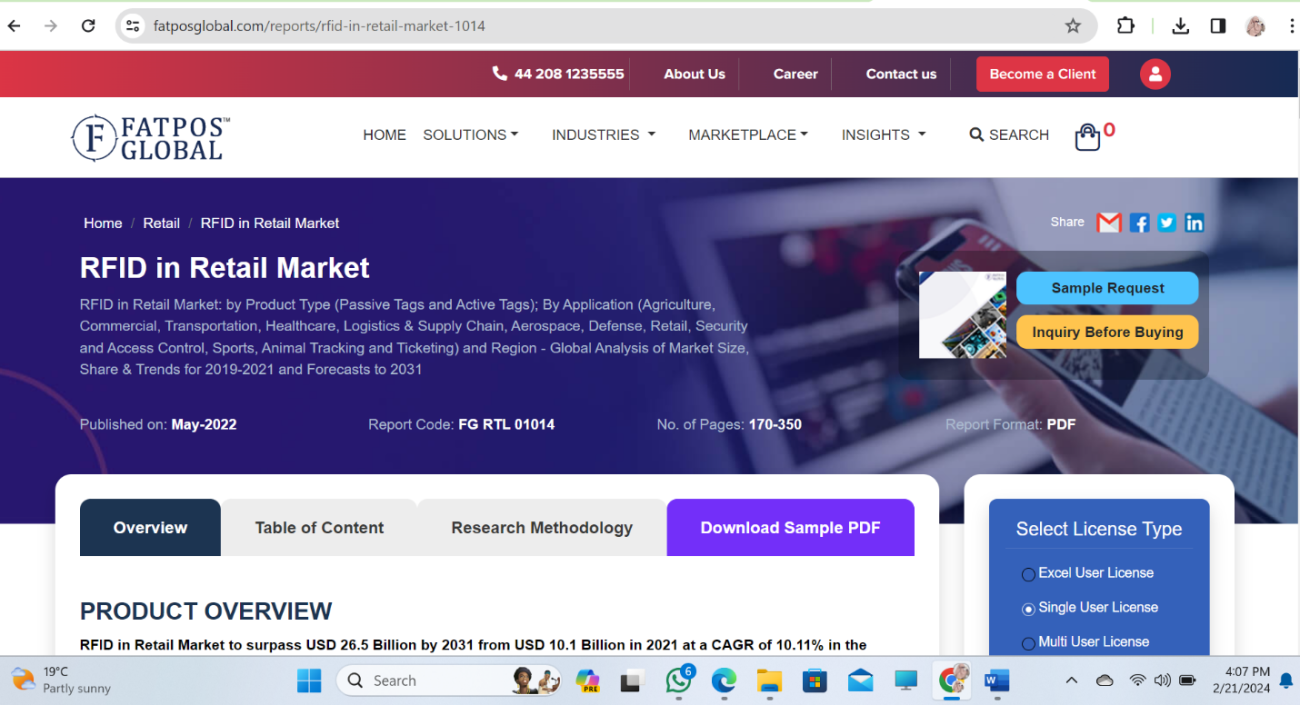
The RFID in Retail Market is on the brink of significant expansion, anticipated to soar beyond USD 26.5 billion by 2031 from its standing at USD 10.1 billion in 2021. This growth trajectory is marked by a notable Compound Annual Growth Rate (CAGR) of 10.11% over the forecast period. Employing Radio Frequency Identification (RFID), this technology harnesses radio waves to collect and transmit data stored on tags affixed to a variety of items, animals, or even individuals. In the retail domain, RFID assumes a pivotal role in automatic identification and tracking processes, thereby streamlining inventory management operations.
RFID technology boasts several advantages such as affordability, ease of tracking, and enhanced inventory management capabilities, thus fueling its uptake across the retail sector. Market segmentation delineates passive and active tags, with passive tags poised for significant expansion owing to their cost-effectiveness and adaptability, particularly within domains like pharmaceuticals, retail, and supply chain management.
Catalysts for market growth include shifts in consumer behavior, which have catalyzed innovations like curbside operations and remote-selling avenues, where RFID technology emerges as an enabler for optimized stock management and reduction in labor hours. The surge in demand for contact-tracing solutions post-COVID-19 has catalyzed the development and adoption of RFID products tailored to meet these exigencies.
Leading participants in the RFID in Retail market landscape encompass prominent entities such as GAO RFID, Globe Ranger, Mojix ,ORBCOMM and Honeywell International among others, who are channeling their efforts towards innovation to cater to evolving market requisites. Europe assumes a pivotal stance in the RFID market, driven by robust adoption rates across sectors like retail, manufacturing, and healthcare, with the United States particularly prominent in this regard.
